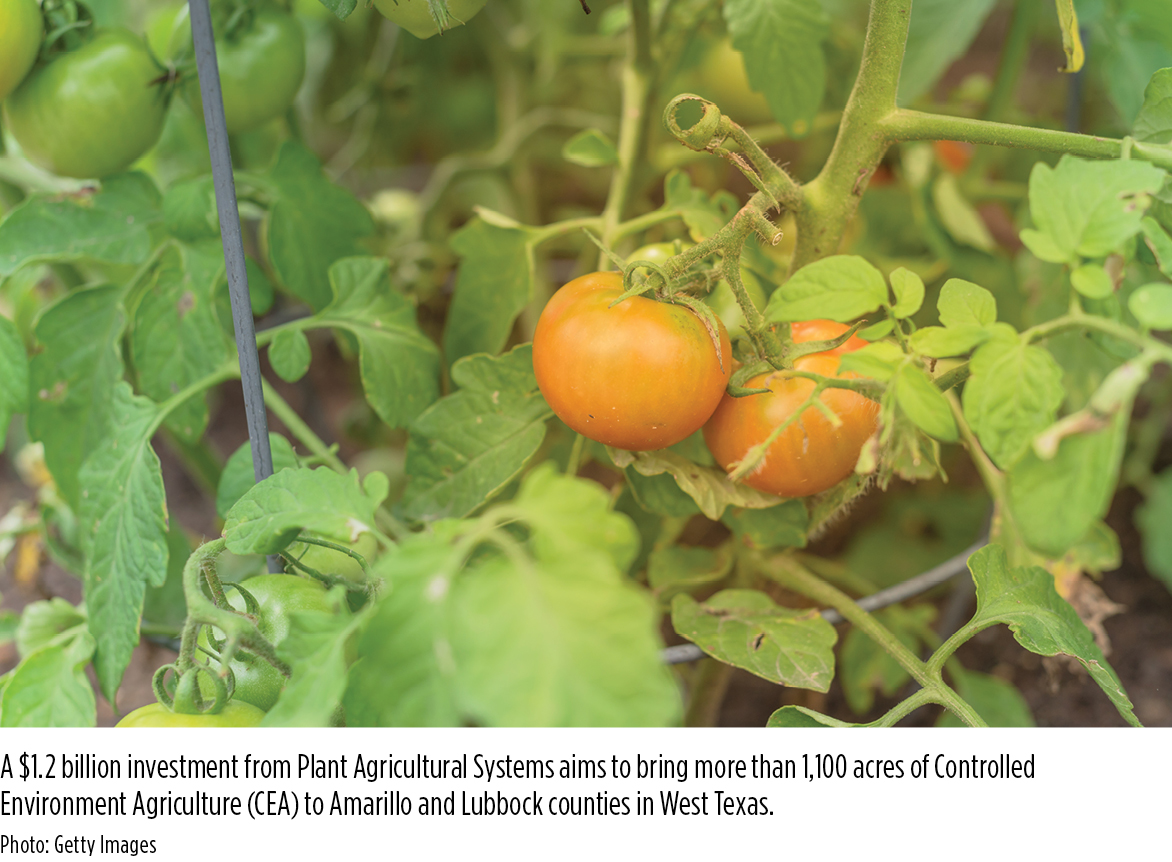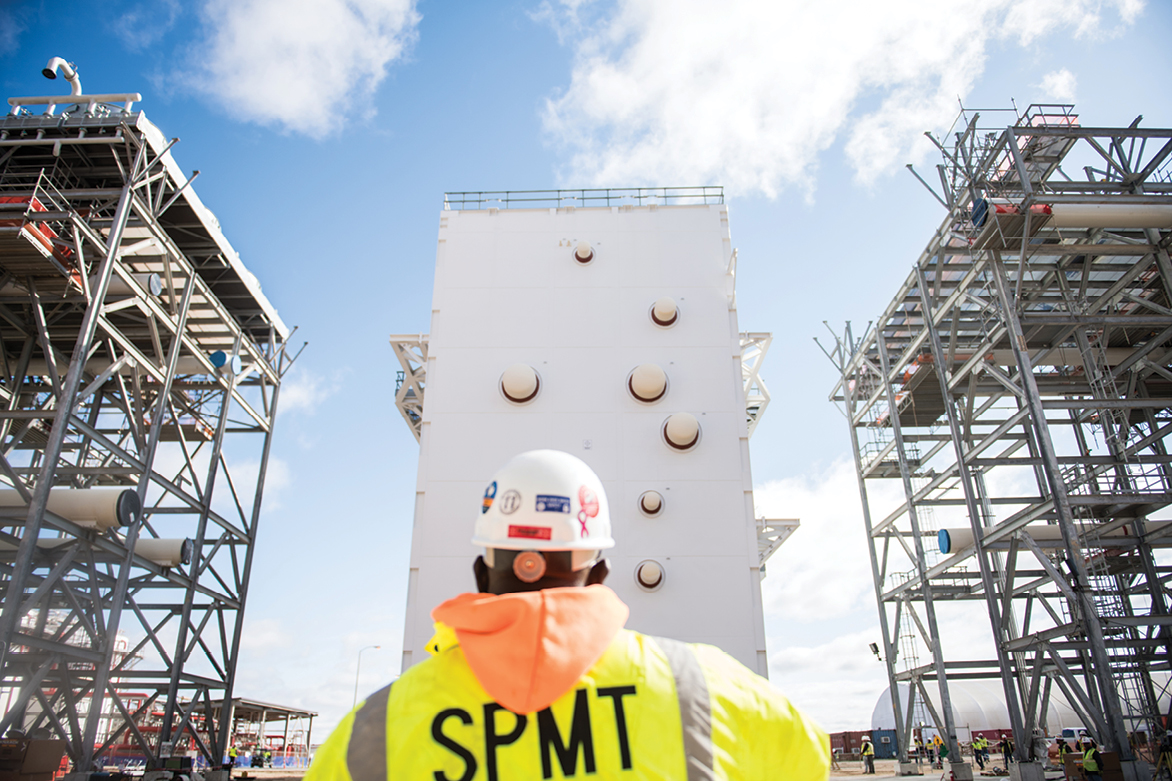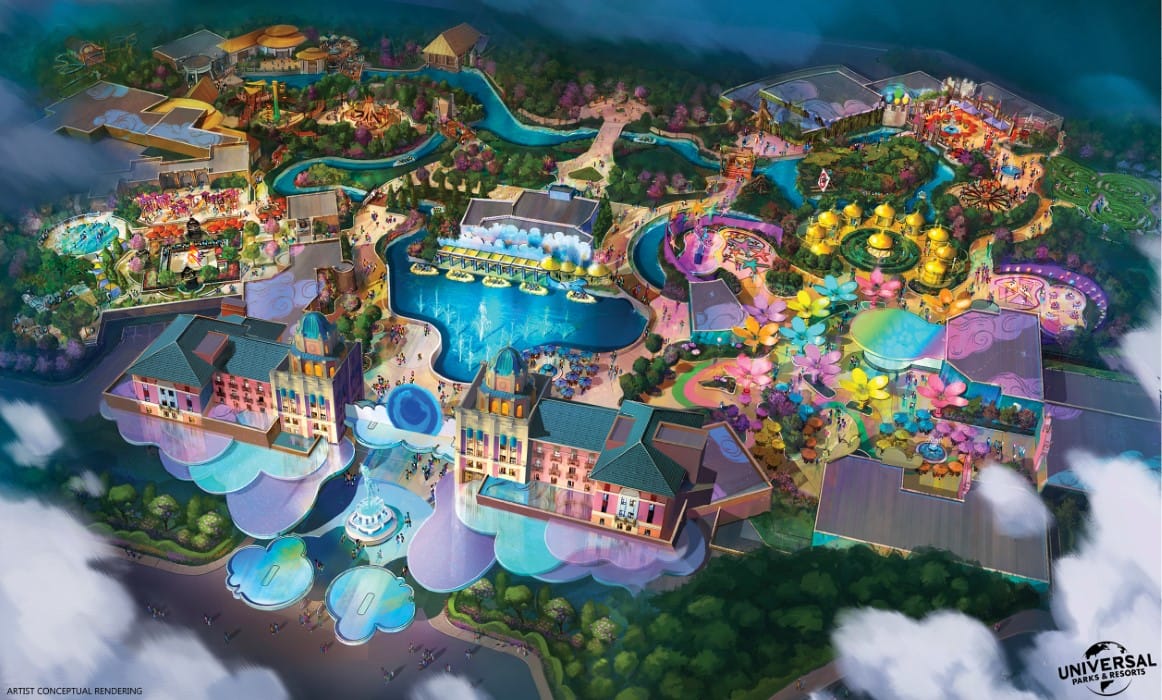Texas is unique in its economic development incentive offerings. As a base-level attraction, there is no corporate income tax or state property tax. On top of the attractive business-friendly environment, Texas also offers discretionary incentives, including the Texas Enterprise Fund, which allocates grant funding to competitive projects that create at least 75 new full-time jobs in urban areas or 25 new full-time jobs in rural areas.
Recent developments in Texas legislation have sharpened the competitive edge for Texas. Governor Greg Abbott signed House Bill 1515, extending the Economic Development and Tourism Office until 2035. The most significant change to Texas’s economic development program is the expiration and replacement of Chapter 313, which allowed school districts to offer tax incentives to businesses to entice investments in their community. The new Texas Jobs and Security Act continues Chapter 313’s incentive of offering reduced property valuation within school districts for 10 years; however, it has modified the program’s eligibility requirements, application and review process.
Under the Texas Jobs and Security Act, the reduced property valuation will be half of a property’s market value. If the property is in one of the state’s 628 Opportunity Zones, the valuation will be 25% of the property’s market value. This will effectively make the Opportunity Zones more attractive to bolster economic development in low-income areas of the state.
One of the most significant modifications of the Chapter 313 program is that the Texas Jobs and Security Act establishes eligibility requirements based on the county’s population rather than categorizing school districts based on the taxable property value to determine a project’s minimum qualified investment amount. Additionally, while Chapter 313 authorized discretion to the school districts requiring minimum job creation levels — even going so far as to allow for a waiver of a job creation requirement — the Texas Jobs and Security Act has statutory minimum job creation requirements:

 The types of projects eligible for this incentive have also changed with the new legislation. Chapter 313 offered the incentive to: (1) manufacturing, (2) research and development, (3) clean coal projects, (4) advanced energy projects, (5) renewable energy electric generation, (6) electric power generation using integrated gasification combined cycle technology, (7) nuclear electric power generation, (8) computer center, and (9) a Texas priority project (planning on qualified investment of over $1 billion).
The types of projects eligible for this incentive have also changed with the new legislation. Chapter 313 offered the incentive to: (1) manufacturing, (2) research and development, (3) clean coal projects, (4) advanced energy projects, (5) renewable energy electric generation, (6) electric power generation using integrated gasification combined cycle technology, (7) nuclear electric power generation, (8) computer center, and (9) a Texas priority project (planning on qualified investment of over $1 billion).
Now, under the Texas Jobs, Energy, Technology, and Innovation Act the purposes are more narrowly defined as allowing only: (1) manufacturing, (2) research and development, (3) technology, (4) utility services facilities, (5) natural resource development facility, or (6) projects to construct or expand critical infrastructure. Projects that are either non-dispatchable electric generation or electric energy storage facilities are not eligible under the new program.
In Other Incentives News …
Among other incentive programs passed during the 88th legislative session in Texas:
Texas Small and Rural Community Success Fund: Provides loan funding to economic development corporations in Texas to support continued growth in more regions of the state.
Texas Moving Image Industry Incentive Program: Provides qualifying moving image productions the opportunity to apply for a cash grant based on a percentage of a production’s in-state spending, including eligible wages for Texans.
Media Production Development Zones: Now permits smaller communities to be designated, allowing for certain tax exemptions for construction, maintenance, or renovation of a media production facility, based on factors such as job creation and wages.
Texas Music Venue Incubator Grants: Eligible music venues and music festival promoters can apply for a partial rebate of certain taxes to encourage expansion of the live music industry.
Texas Space Commission and Texas Aerospace Research and Space Economy Consortium: Support the development of emerging technologies, research, workforce training and infrastructure for space exploration and commercial aerospace; promote innovation; and attract capital investment and new good-paying jobs.
Texas Enterprise Fund: Awards “deal-closing” grants to companies considering Texas for a new project.
Texas Semiconductor Innovation Consortium and Texas Semiconductor Innovation Fund: A new program that will develop a statewide strategic plan for semiconductor industry growth and ensure the state’s continued leadership in advanced semiconductor research, design, and manufacturing. The fund will provide matching financing to Texas colleges and universities for semiconductor manufacturing and design projects and provide the opportunity for eligible businesses to apply for grants to encourage economic development and job creation.
The application process is also slightly altered. The application process will now be reviewed by the comptroller, the governing body of the school district and the governor. If recommended by the comptroller, the application is given to the governor, who will decide whether or not to enter into a tri-party agreement among the governor, the governing body of the school board and the applicant.
This change addressed a criticism of Chapter 313, which authorized the governing body of the school district to make the overall decision regarding the application’s approval.
Ultimately, while the eligibility and application mechanics differ with the new Texas Jobs and Security Act, businesses will still be able to potentially reduce their property valuation for 10 years.
— Stephanie Yarbrough, Partner, Womble Bond Dickinson
McAfee, Universal Join Bevy of Firms Flocking to Frisco
It’s been a busy past 12 months for Frisco, the north Dallas suburb that seemingly can’t gobble up new business investors fast enough. Two of the latest to cast their lot here are McAfee and Universal Studios.
After announcing in January that it would locate a new regional technology headquarters in Frisco, California-based McAfee welcomed 220 employees to new digs at 17 Cowboys Way at The Star in Frisco on July 27. The security software company leased 30,000 sq. ft. in the high-rise office building and plans to use the space for work in finance, accounting, product revenue, technology services, marketing and customer service.
Benni Bueckert, vice president of workplace and engagement for McAfee, said the new office is part of several strategic moves the company is making this year, including the opening of new offices in Cork, Ireland, and Madrid, Spain. She also said the Frisco office would be engaged in “local educational and tech startup opportunities.”
The move comes just a few months after Universal Parks & Resorts announced it would open a new theme park in Frisco geared toward families with young children. The company purchased 97 acres of land that it plans to use to build a theme park, an adjacent themed hotel and a future expansion. Designed to be about one-fourth the size of Universal Studios in Orlando, the new Frisco theme park will feature family-friendly attractions, playful shows and character meet-and-greets, the company said in a release.
Susan Arledge, senior managing director for Newmark in Dallas, says she is not surprised that Frisco is reaping a whirlwind of jobs and corporate investment. “Frisco does not participate in the 1% of sales tax for DART transportation, which the other Dallas area communities pay,” she says. “Instead, Frisco allocated those funds to economic development and leads Dallas-Fort Worth in economic incentives they can offer to companies.”
Other assets drawing companies and workers alike to Frisco, adds Arledge, are good schools, the headquarters and training facilities of the Dallas Cowboys, a strong healthcare community, and its focus on being “Sports City USA.”
As a result, Frisco welcomed 16 new corporate brands in 2022 while securing major expansions from four existing companies. The new employers are expected to create more than 5,600 Frisco-based jobs over several years.
“We have seen a lot of momentum in the innovation space,” says Emily Pollard, head of marketing and communications for the Frisco Economic Development Corp. “Fifty percent of our projects in 2022 were innovation-related. In Frisco, we have twice the national average of tech talent, which is a huge driver for tech companies looking to grow.”
Among the recent investment announcements in Frisco were Garver USA, Boingo Wireless, Ruiz Foods, and Teachers Insurance and Annuity Association (TIAA). TIAA is bringing over 2,600 jobs to a new 15-story tower near The Star in Frisco.
Arledge says that technology employers will continue to show interest in Frisco because “they are big in e-sports and e-gaming. The GameStop Performance Center in Frisco is the headquarters of Complexity Gaming, the recognized global leader in modern e-sports. In addition, Frisco is home to Stadia Ventures and Scoreboard Ventures, two of the top sports tech accelerator companies and venture capital firms launching innovative sports startups.”
— Ron Starner

Plant-AS Plants Its Flag and Its Seeds in West Texas
A combined $1.2 billion investment from Plant Agricultural Systems has landed in West Texas’ Amarillo and Lubbock counties. The agriculture data and technology company, otherwise known as PLANT-AS, plans to bring over 3,000 acres of advanced Controlled Environment Agriculture (CEA) to North America over the next few years. Beginning in Texas, the company will build out more than 1,100 acres between the two counties.
The Amarillo Economic Development Corporation (AEDC) and the Lubbock Economic Development Alliance (LEDA) collaborated to bring this system to town. A breakdown of the project investment shows that Amarillo will land $510 million in build-out of 400 acres of CEA facilities over the next seven years while roughly $670 million will go toward 700 acres of CEA production facilities in Lubbock over the next 10 years. Together, the project will create 700 new jobs to Amarillo and 900 new jobs two hours south in Lubbock.
LEDA President and CEO John Osborne said PLANT-AS started working with the two counties in September 2022 to address site needs and the process of working in Texas before making an official investment decision in June 2023. As of now, due diligence is taking place to improve infrastructure and utilities connected to the Lubbock site to prepare for phase one of the project slated to begin in the fall of this year.
“The United States actually imports more fruits and vegetables than we produce,” says Osborne. “Traditionally, we’ve not seen many fruits and vegetables grown in this region. It’s been more grains and cotton. So it’s exciting to see that that happening in Lubbock.”
Each of the facilities will house state-of-the-art hydroponic technology to produce leafy greens, tomatoes and possibly strawberries. This produce will grow within the CEA facilities and be harvested at its peak, ensuring quality product and nutrition. In Lubbock, Osborne says, the produce will be accessible to local restaurants, retailers and grocery stores, as well as available to neighboring states.
As population in the nation, and specifically Texas, is set to rise, having a safe and reliable food source is vital to the community.
“This facility is going to help do this and provide the types of quality leafy greens, tomatoes and strawberries people are going to want, ensuring those foods are picked as close to the date that they would be consumed as possible. It’s just phenomenal,” says Osborne.
PLANT-AS’ advanced production facilities act as modern data centers whose AI capabilities will process crop-cycle data. Data collected from these sites and processed through IBM’s blockchain-supported system lay a new foundation for the company’s digital infrastructure model. This means that the global food supply chain will have real-time data to power operations and decision-making.
While food production like this has not previously occurred in this region of the state, research about it has. Texas Tech University is a Tier One research university that features an agricultural school and engineering school, both of which PLANT-AS plans to tap into as these facilities go live.
“Lots of different skills are going to be required, and I know that they’re excited to get a lot of their workforce here locally,” says Osborne.
This sustainable method of food production, distribution and consumption aligns with the company’s goal in offering society a safe and alternative approach to traditional agriculture processes. In doing so, it will provide technology that allows regions like West Texas access to crops that previously could not withstand the region’s environment.
“The end-to-end impact PLANT-AS will have on existing food systems begins with the agricultural process and extends all the way through the consumer experience,” said Plant Director of Global Brand Representation Sara Gaul in the release. “We are thrilled to be a part of the economic growth in West Texas. Together, we are building infrastructure for the future, and people are at the core of everything.”
A transformative project like this provides a pull for investments within Lubbock’s food and beverage industry, according to Osborne. Since last year, California-based Tropicale Foods and North Carolina-based Hampton Farms, Inc. have invested over $76 million to bring manufacturing plants here. These investments and more in the works show future industry growth is on the horizon.
“We continue to see growth taking place in our community and we think PLANT-AS fits in nicely with our community and a Tier One research institution at Texas Tech University,” says Osborne. — Alexis Elmore

In the Energy Game, It Takes All Kinds
Various categories of power generation facilities may no longer qualify for the “new” version of Chapter 313. But Texas certainly continues to qualify for nation-leading energy investments.
According to the 2022 Solar Jobs Census released in July 2023 by the Interstate Renewable Energy Council (IREC), Texas was No. 2 in added solar power capacity in 2022 (3.6 GW) and No. 2 in new solar jobs as well, adding 904 jobs to reach a total of 11,250. “Texas not only led the nation in utility-scale solar growth but also saw its best year ever for residential solar,” IREC reported, as the state was No. 5 in residential solar growth since 2017.
Just as important, according to IREC, Texas is one of only five states with five or more clean energy manufacturing projects among 83 the organization documented across the nation in the previous 12 months. Among them are Canadian Solar’s first U.S. manufacturing facility, a $250 million, 5-GW plant expected to open late this year; Mission Solar Energy’s 200-MW plant in San Antonio; and a new PV module plant in Houston from Seraphim Energy Group with an expected annual capacity of more than 2 GW.
On another energy front: Remember liquefied natural gas? LNG projects continue to march on in Texas.
In March, Sempra announced its subsidiary Sempra Infrastructure Partners, LP reached a positive final investment decision (FID) for the development, construction and operation of the $13 billion Port Arthur LNG Phase 1 project in Jefferson County. Since 2015, Port Arthur LNG has invested more than $40 million to support Jefferson County communities, including working with local vendors to procure materials and services for the relocation of a 3.5-mile portion of Highway 87 and on grants to more than 60 local non-profits, schools and business development groups.
“With strong customers, top-tier equity sponsors in ConocoPhillips and KKR and a world class contractor in Bechtel, this project has the potential to become one of America’s most significant energy infrastructure investments over time,” said Jeffrey W. Martin, chairman and CEO of Sempra, “while creating jobs and spurring continued economic growth across Texas and the Gulf Coast region.”
“Bechtel has a record of delivering LNG infrastructure on the U.S. Gulf Coast and bringing quality jobs and training opportunities to local communities,” said Brendan Bechtel, chairman and CEO of Bechtel. “The 5,000 construction jobs this project creates will provide outstanding opportunities for craft professionals — growing a skilled workforce that will benefit the region for years to come.”
In July, NextDecade Corp. announced its own FID to construct the first three liquefaction trains (Phase 1) at the Company’s 27 million metric tons per annum (MTPA) Rio Grande LNG (RGLNG) export facility in Brownsville, Texas. The company executed and closed a JV agreement for Phase 1 which included approximately $5.9 billion of financial commitments from Global Infrastructure Partners (GIP), Singapore-based investment fund GIC, Mubadala Investment Company and TotalEnergies. It also committed to invest approximately $283 million in Phase 1 including $125 million of pre-FID capital investments into Phase 1. Bechtel is the contractor on this project too.

Photo courtesy of Bechtel
The overall $18.4 billion project financing for RGLNG Phase 1 “is the largest greenfield energy project financing in U.S. history and underscores the critical role that LNG and natural gas will continue to play in the global energy transition,” NextDecade stated in a release. “Industry experts expect a global shortfall of LNG before 2030, which if not addressed by projects such as RGLNG, may result in a prolonged reliance on other more carbon-intensive fuels such as coal and oil.”
“This project gives TotalEnergies access to competitive LNG thanks to its low production costs,” said Patrick Pouyanné, chairman and CEO of TotalEnergies. “LNG from this first phase will boost TotalEnergies’ U.S. LNG export capacity to over 15 MTPA by 2030, and thus our ability to contribute to European gas security, and to provide customers in Asia with an alternative form of energy that is half as emissive as coal.”
In Corpus Christi, Cheniere developed the U.S.’s first greenfield LNG export facility in 50 years, the Corpus Christi Liquefaction facility. The 1,000+ acre facility contains three liquefaction trains, with a total capacity of 15 million metric tons per annum. The first two LNG trains were completed in 2019 and the third was completed in 2021. In June 2022, Cheniere announced the Corpus Christi Stage 3 expansion, which will include execution of seven midscale trains by, you guessed it, Bechtel. Once operational, the expansion has an expected total production capacity of approximately 10+ mtpa of LNG. To date, Cheniere and Bechtel have completed nine LNG trains between Cheniere’s two Gulf Coast facilities. “With the Stage 3 expansion underway, up to seven additional LNG trains are in the EPC phase to support the growing demand for natural gas around the world,” says Bechtel. — Adam Bruns
Come Back to the Office … Pretty Please?

In the carrot-vs.-stick game to get office workers back to the office, amenity-laden developments continue to sprout in the growing suburban markets of Texas.
One of the newest is in Allen, where locally based developer JaRyCo in August broke ground on FarmWorks One, a 102,000-sq.-ft., three-story office building one block from The Farm in Allen, a 135-acre mixed-use project.
“We designed FarmWorks One for a post-Covid world, incorporating numerous features that will create a great environment for companies looking to improve efficiencies and teamwork as their employees return to the office,” said Bruce Heller, president of JaRyCo. Features include outdoor ground-level workspace and balconies on every floor equipped with power and wifi for outside work. “Oversized stairs to reduce elevator use and promote exercise and HVAC systems with high-efficiency air filtration and ionization treatment all promote a healthier environment for office tenants,” said JaRyCo.
The Farm in Allen is planned to have 1.6 million sq. ft. of office space, 142,000 sq. ft. of retail, a hotel, 60,000 sq. ft. of restaurants, 112 townhomes and 2,400 urban residential units.
